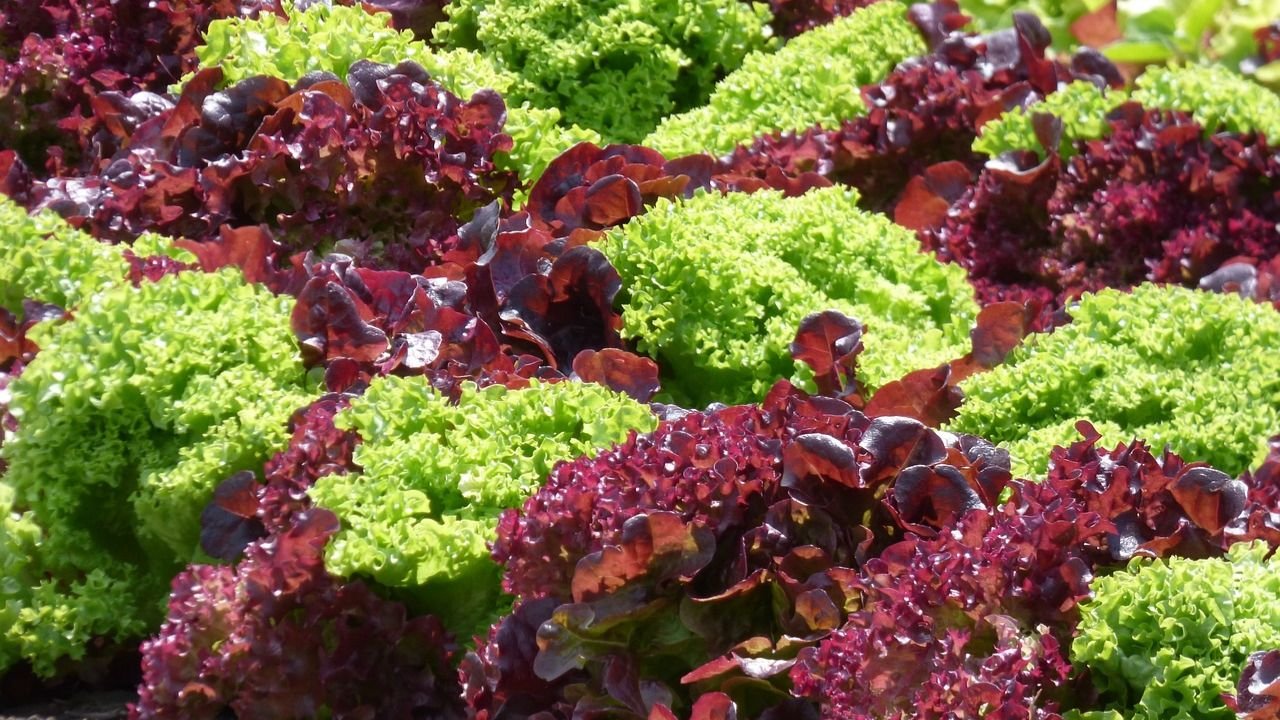Lettuce is a green leafy vegetable that is very easy to grow at home. Green leafy vegetables have their unique benefits. It is very easy and beneficial to grow it at home. You can grow it in the garden, balcony, or any place with a sunny window. Below is a step-by-step guide to grow it:

Scientific Name: Lactuca sativa
Steps to Grow Lettuce at Home
Step 1: Choose the right variety
- To grow it at home, it is very important to choose the right variety, some of which are:
- Leaf lettuce: It has loose leaves that can be gently cut.
- Romaine (Cos) lettuce: It is ideal for salads. It is crunchy to eat and has long ends.
- Butterhead or Bibb lettuce: It has soft leaves and loose ends.
You can choose its variety according to your taste and the conditions in which it can grow.
Step 2: Choose the right place to grow
- Lettuce requires partial to full sunlight to grow. In hot climates, it is ideal to place it in 3-4 hours of direct sunlight or some shade during the afternoon to prevent bolting.
- The growing area should be well-draining, whether it is a garden bed, raised bed or container.
Step 3: Prepare the soil to grow
- Use loose, well-draining soil with plenty of organic matter.
- Keep the soil slightly acidic to neutral pH (around 6.0-7.0). You can add compost or aged manure to retain fertility and moisture.
Step 4: Sow the seeds
- Plant the seeds about 1/4 to 1/2 inch deep in rows or spread them out on the bed. Keep a distance of about 12 inches between the rows.
- Sow the seeds thinly in the container at least 6-8 inches deep and cover it lightly with soil.
- The best time to plant lettuce is in the winter as it loves cool weather, so plant it in early spring or fall. For a consistent harvest, sow new seeds every 2-3 weeks.
Step 5: Watering Time
- After planting the seeds, lettuce needs evenly moist soil so water it slowly without flooding the seeds.
- The best time to water it is in the morning. Watering in the morning allows the leaves to dry out during the day, reducing the risk of fungal diseases.
- Avoid overwatering as it can cause root rot. Make sure to have good drainage to prevent root rot.
Step 6: Thinning process
- Once the seedlings have started to develop a few leaves, thin them to about 4-6 inches apart for loose-leaf varieties.
- To do this, remove the extra seedlings and transplant them to another area so that each plant has enough room to grow.
Step 7: Fertilize
- Lettuce is a light feeder so you can fertilize it with a diluted balanced fertilizer or compost tea every few weeks during the growing season.
- Fertilizing regularly can increase soil fertility and structure.
Step 8: Maintenance and Pest Control of plant
- As it grows, it is important to maintain it from pests and other diseases that can kill the plants. Add a thin layer of organic mulch around it to retain soil moisture and suppress weeds.
- It is prone to common pests such as aphids, slugs, and snails. To avoid this, use an organic insecticide or handpick the pests as needed.
- In hot weather, use shade cloth to keep the lettuce cool and prevent bolting (premature flowering).
Step 9: Harvesting time
It can be harvested in two ways:
- Leaf lettuce: The outer leaves are cut separately to allow the center to grow.
- Head lettuce: The head is harvested when it is firm and fully formed.
The right time to harvest usually depends on the variety you have grown. Its harvesting can be started 30-60 days after planting depending on the circumstances.








